Increasing Organic Traffic at Scale With Neighborhood Content
Residential
| 23 May 2025

Commercial
Location Intelligence Solutions
“Gut feel” is often cited as one of the main drivers behind major real estate investment decisions. In many cases, it can be a proxy for years of experience in a specific market or submarket, which can be hard to replicate in other cities and too risky in today’s rapidly changing environment. With the pandemic upending how and where people live, companies reconsidering remote work strategies, and general economic uncertainty, data analytics and deep location insights that can gut check gut feel are more important than ever before.
At Local Logic, we’ve made it our mission to build a comprehensive understanding of cities to support real estate decisions and rethink the investment decision process. By drawing on billions of data points on lifestyle characteristics, the real estate market, and demographic variables, we provide a holistic perspective on over 200 million sites in the US and Canada, making site assessments deeper and more efficient.
In this case study, we explore how our location intelligence platform can be used to leverage precise local insights to help a multifamily residential developer who has been successful in the Uptown neighborhood of Dallas find a promising site in Atlanta, a market new to the firm. This platform specifically allows users to automatically search areas by investment thesis, compare neighborhoods, and get detailed and relevant data on any address.
Consider the following example: a Dallas, Texas-based development company has recently completed a successful project in the Uptown neighborhood in Dallas, TX, and now seeks to replicate its success in other parts of the country, beginning in Atlanta, Georgia.
As Dallas natives, the development company knew that Uptown, the area marked by a pin in the map below, is consistently ranked as one of the liveliest places to live-work-play in the city, a characteristic captured by our proprietary ‘vibrancy’ score.

Using our platform further reveals the unique local neighborhood character. Our custom in-house lifestyle indicators clearly show the area is walkable, has excellent restaurant and cafe offerings, and provides desirable access to parks and even schools. The neighborhood compares very favorably to other parts of the city on all these metrics.
Uptown is well-served by amenities such as bars, restaurants and groceries which are popular with the Gen Z and Millennial renters forming the majority of its population. The development company would like to find similarly well-amenitized and vibrant options in Atlanta to expand its portfolio beyond Dallas.
Local Analytics’s insights confirm that Atlanta, Georgia does indeed have neighborhoods and submarkets that offer similar promise and vibrancy to Uptown, Dallas. The metropolitan area is home to a population of more than 6 million, and is experiencing considerable population growth, fuelled in part by a healthy economy. Its Mayor and City Planner have also expressed sustained interest in densifying the city and creating more dwellings in order to improve home affordability.
The Big Peach also shares various similarities with Dallas, which make it an ideal candidate to translate some of the investment success from Texas to Georgia. Mapping car friendliness, one of our custom lifestyle scores, namely reveals both are driving cities, with a downtown built around a main highway spine along with peripheral ring roads. Both also have comparable demographics in terms of household size, age and median income.
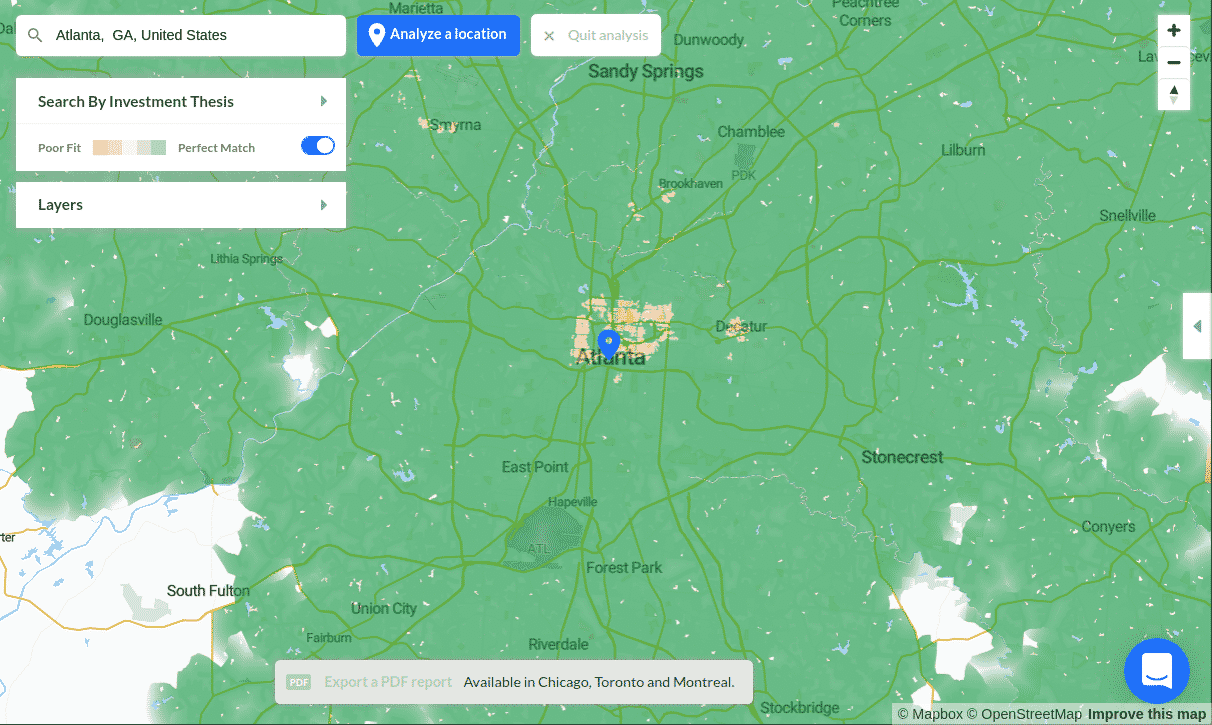
Atlanta car-friendliness
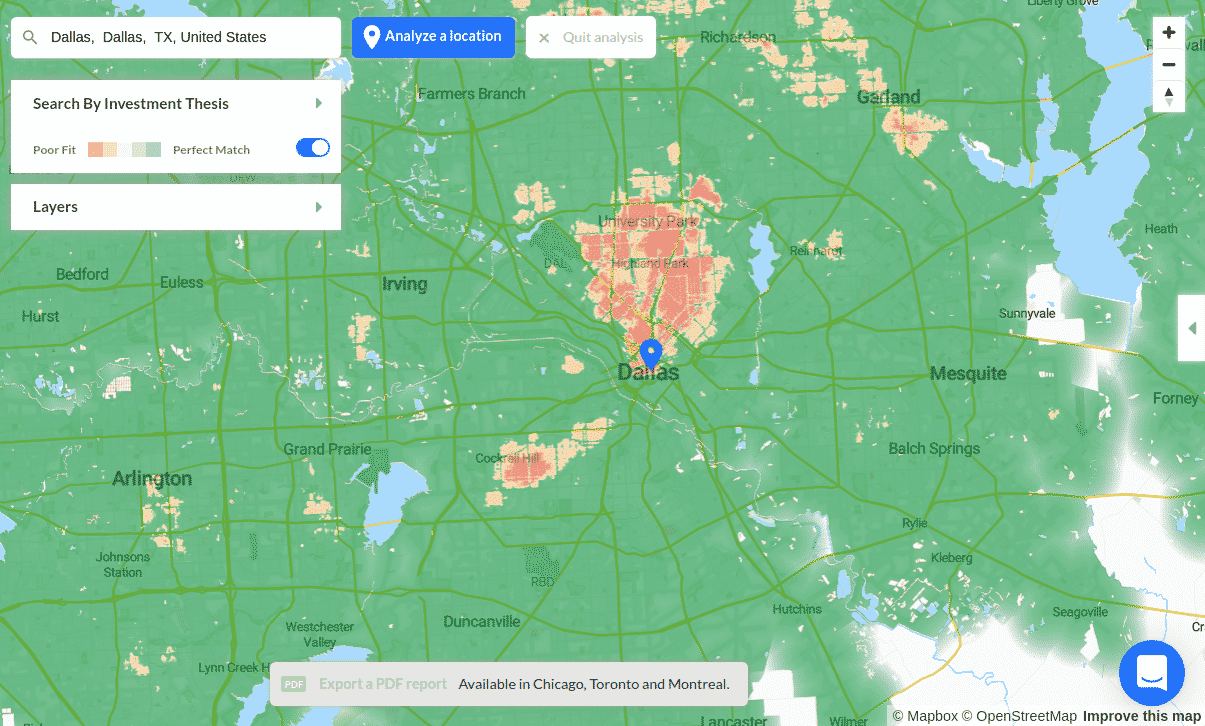
Dallas car-friendliness
However both cities also differ in some key aspects. Atlanta has both more older buildings and a significantly larger proportion of apartments than Dallas. This might represent an opportunity to develop older, undervalued neighbourhoods that are either already zoned for multifamily buildings, or could be zoned as such given the current city administration’s vision for housing.
By considering important neighborhood characteristics like housing mix, vibrancy and age profiles that define Uptown today and have made it a profitable site for developers in the past, we are able to build a very precise investment strategy to identify new promising areas in Atlanta.
Local Analytics search results are presented in the heatmap below where green represents areas having a similar profile to Uptown. From these interesting zones, we’ve specifically identified three neighbourhoods we find worth calling out:
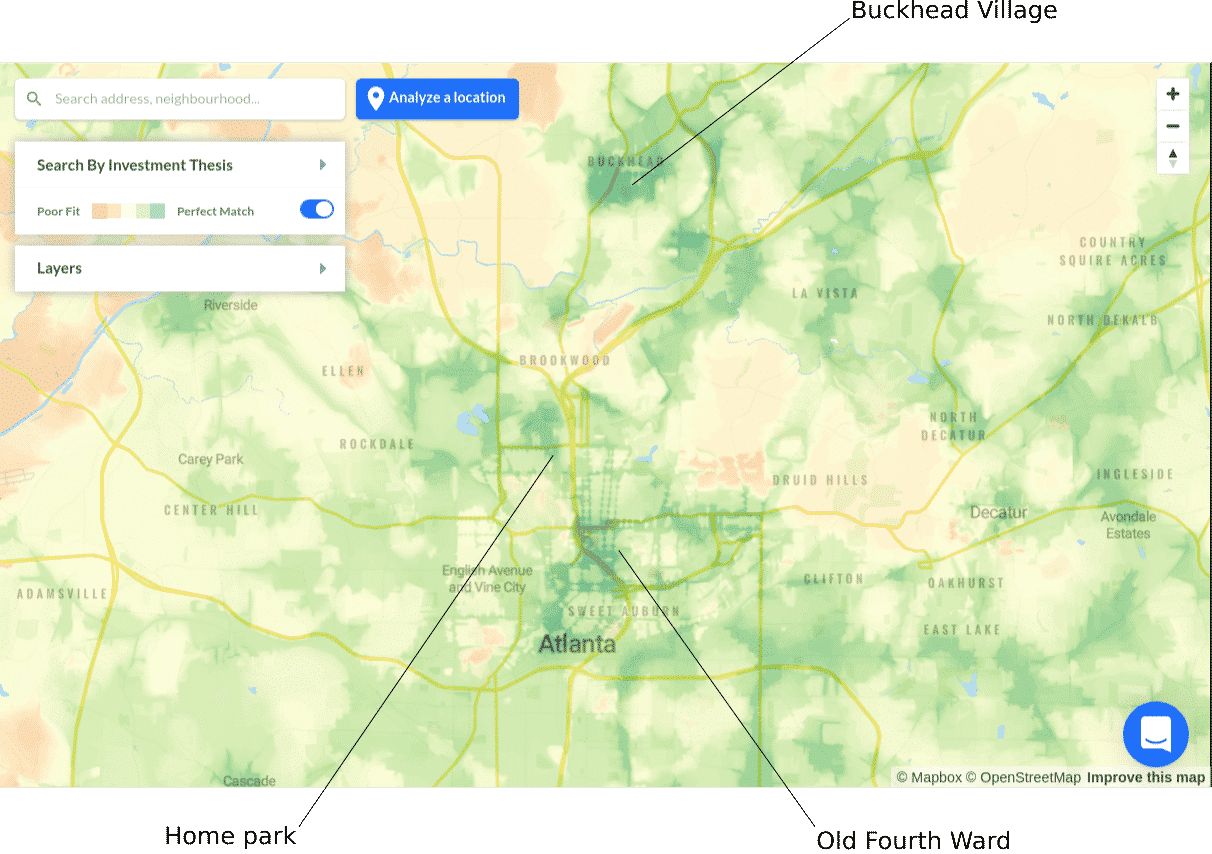
Atlanta – similarity with Uptown, Dallas
In the next sections, we break down exactly why these neighborhoods could represent hidden gems and the next big opportunity for our Dallas developer as well as how our tool can help identify them.
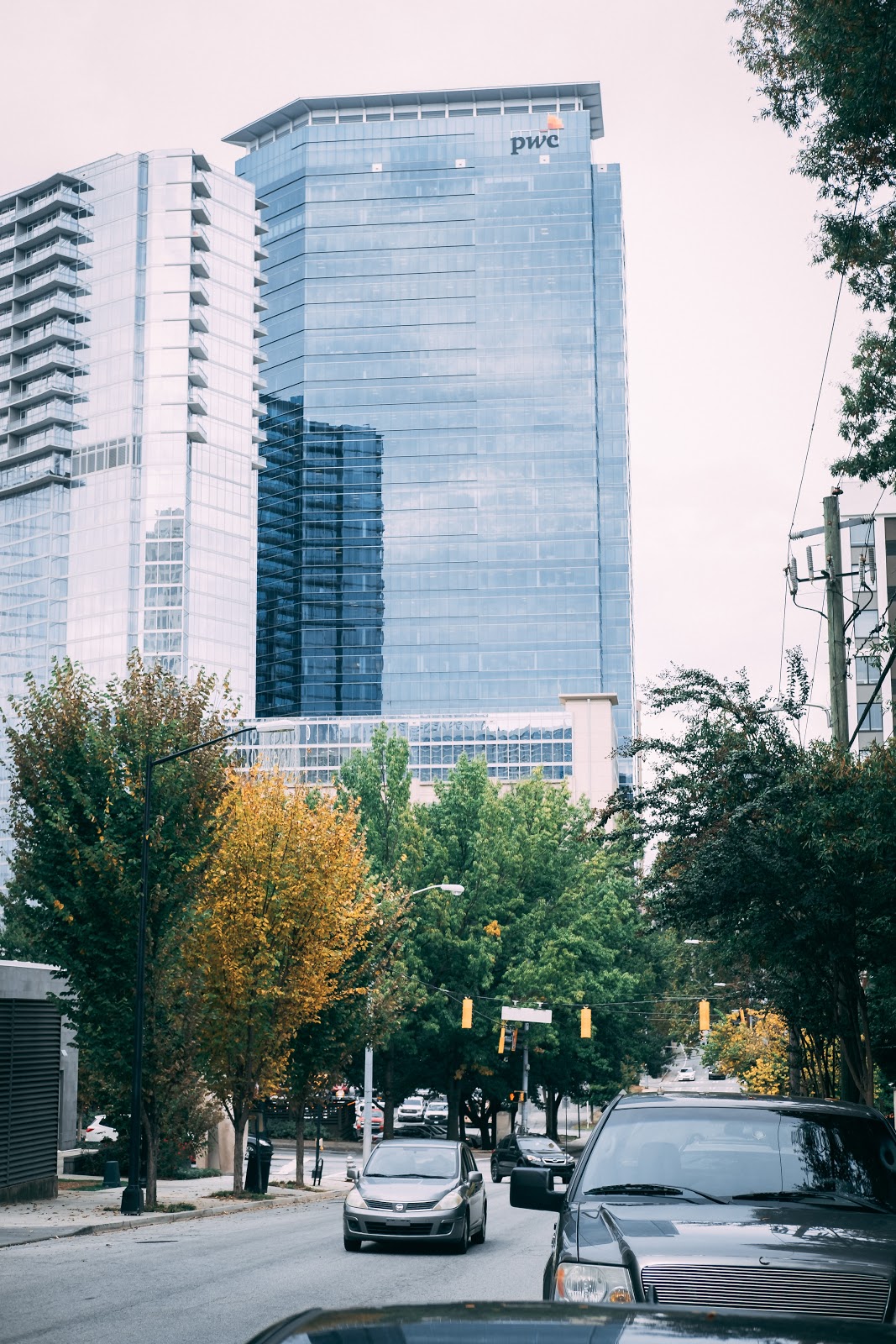
The Atlanta neighborhood most similar to Uptown is Buckhead Village. The area allows for the same walkability, access to restaurants, schools and nightlife as Uptown. It also showcases a comparable housing mix and proportion of renters to Uptown.
As can be seen in the map, this neighborhood is much more similar to Uptown than surrounding areas. Since our platform uses precise street level data, it is capable of identifying such specific pockets within a larger city.

Buckhead Village, Atlanta – Similarity with Uptown, Dallas
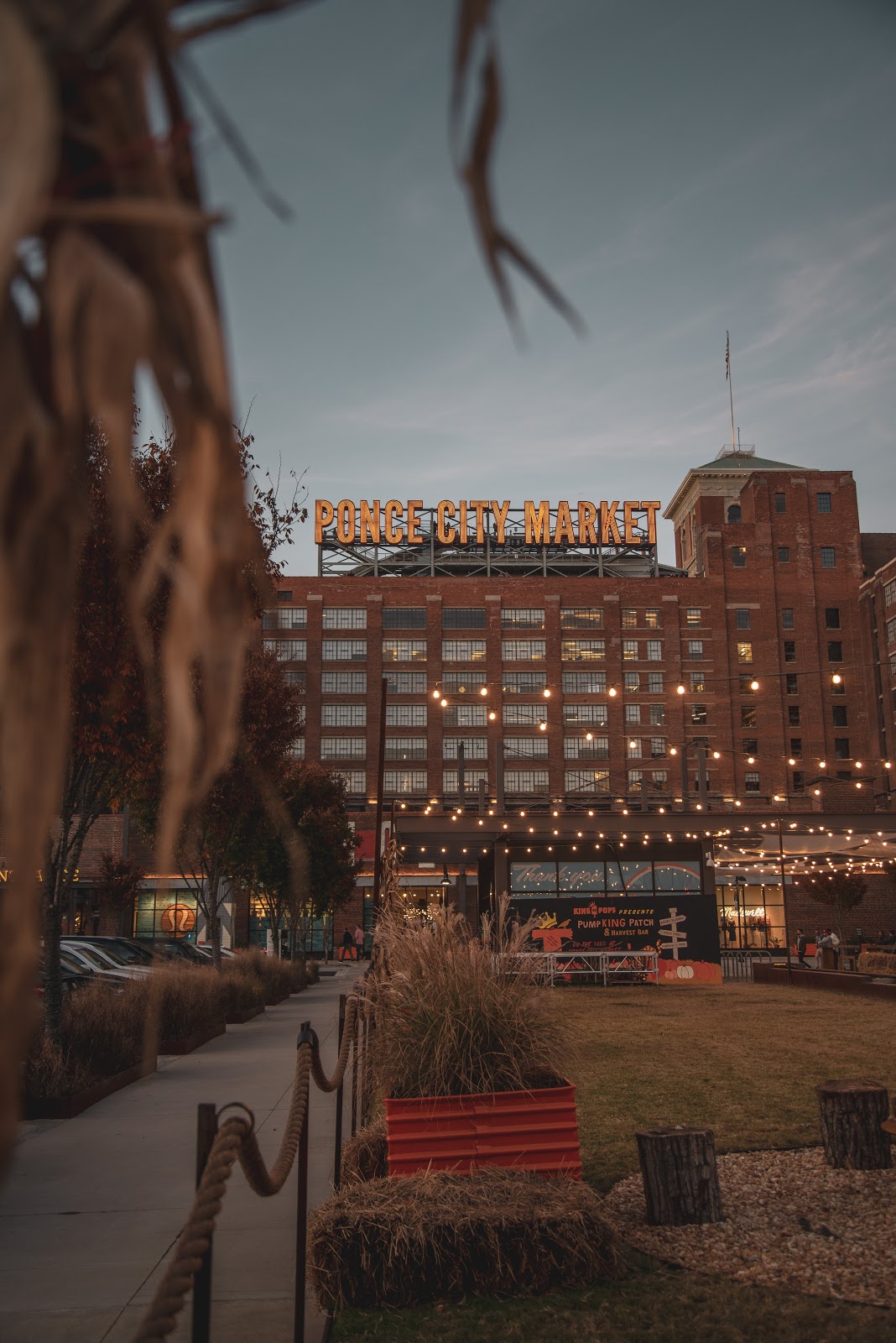
Next on our list of comparable neighborhoods is the Old Fourth Ward. Due to its more central location, it is more similar to Uptown than Buckhead Village in terms of walkability, vibrancy and car friendliness. However, it fails to offer the same level of restaurant and cafe selection as the former, with much of these offerings concentrated in the area around and including Jamestown’s Ponce City Market.
Nonetheless, this neighbourhood could offer a good investment potential. Old Fourth Ward has a relatively lower median household income, a lower proportion of residents between 20-34, and around 20% of buildings predating 1960. This contrasts with the more affluent and renovated Buckhead. Sites here are worth exploring since this already walkable and accessible neighbourhood could become extremely attractive as the restaurant and shopping offerings expand along Atlanta’s BeltLine which has been central to the neighbourhood’s popularity and growth.
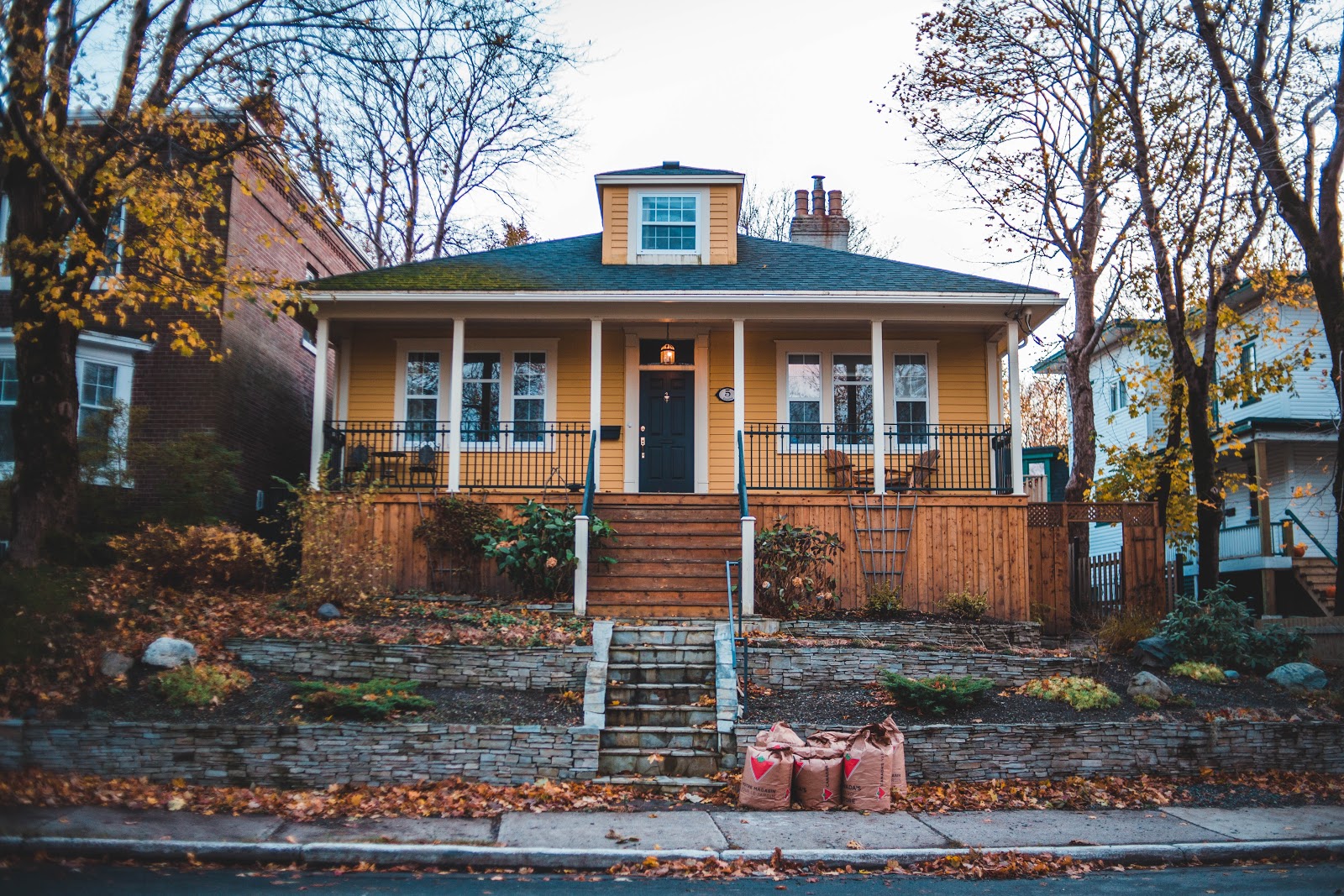
The final neighbourhood on our list of similar areas we find worth pointing out is the Home Park area of West Midtown, a neighbourhood conveniently located next to Georgia Tech and close to a highway, not too far from downtown and home to popular retail and dining options, including the mixed use White Provisions District.
Although Home Park is not as similar as the other two neighbourhoods we’ve highlighted above, it also shares a few interesting characteristics with Uptown, Dallas that could be leading indicators of success for this developer’s investment thesis. For instance, the neighbourhood has a high proportion of young renters living in large and modern apartment buildings.
This area is interesting, because it might not seem very similar to Uptown at first glance. Indeed, many Atlantans may know Home Park more for its historic single-family craftsman style homes and not as vibrant and walkable. However, our algorithm still manages to identify specific areas close to busier commercial streets, like Howell Mill Road, that share some of the vibrancy of the Dallas neighborhood. Additional, planned and potential for densification in areas surrounding this artery and increased restaurant offerings will continue to make Home Park very desirable for students and young professionals.
These findings reveal the value of leveraging a data-driven approach to complement and improve real estate decisions. Using data can free developers from overemphasizing first impressions and giving in to biases while highlighting the value of less familiar cities and neighbourhoods.
Identifying a neighbourhood that fits a given investment thesis is not a trivial task, due in large part to the complex and evolving nature of cities. Nonetheless, using data-driven approaches can help automate this time consuming process. Leveraging the insights provided by Local Analytics can also help avoid preconceptions and uncover hidden gems in new or unfamiliar markets and neighbourhoods.
Having a platform with full coverage in the US and Canada also means any development company can create its own niche and focus on its key area of expertise. Detailed on-the-ground knowledge is no longer required to identify promising areas from one town to the next.
💡 Curious about location insights?
Get a demo to learn how to grow your business with location data.